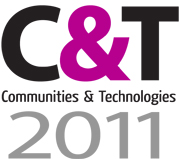Kirralie Houghton – PhD Confirmation Seminar
Time : 25 February 09:00 – 10:30
Location: Z2 Block, Level 3, Room 306, Creative Industries Precinct, QUT, Musk Avenue, Kelvin Grove, Australia
Understanding the Implications of Networked Interactions on the Design of Public Urban Spaces
Kirralie Houghton
PhD Confirmation Seminar
QUT Urban Informatics Research Lab
https://www.urbaninformatics.net/projects/kirralie/
This study will investigate the impact of networked social interactions on the design of public urban spaces. The focus is on the function of public spaces as ‘third places’: these are places not defined as ‘home’ (first place), not ‘work’ (second place), but those other places where we ‘hang out’ (Oldenburg, 1989), a place that is familiar, comfortable, social and meaningful for everyday life.
The qualitative methodology of this study involves gathering data from two research sites, North Lakes, QLD and Canada Bay, NSW. It utilises a mix of qualitative methods including interviews, focus groups, and a design charrette to investigate the elements of Human Computer Interaction (HCI) on social communication practices for the enhancement and augmentation of physical public place. The data drawn from these investigations will be aligned with best practice for urban design and the key social elements that inform planning considerations. The analysis will focus on defining the new patterns of behavior for social practice and how these translate into use of physical public spaces in a ‘tech-savvy’ mobile age.
The aim of the research is to offer guidelines and directions for urban planners when designing public urban spaces in the age of ubiquitous and ‘everyware’ computing (Greenfield, 2006). These will be framed as patterns of use and linked to exemplar information and communication technology (ICT) and HCI projects that demonstrate how social engagement can be enhanced and supported within physical environments, and detailing the physical elements of place that have been shaped or the potential to be shaped by these technologies. Following the triad of urban informatics, the project is positioned at the intersection of urban planning (place), cultural geography and urban sociology (people), and ICT and HCI research (technology).


